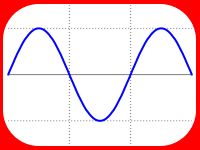Team:Montreal
From 2008.igem.org
| Line 1: | Line 1: | ||
{| align="center" | {| align="center" | ||
| - | |align="center" |[[Image:mcgill front2.jpg|850 px]] | + | |align="center" |[[Image:mcgill front2.jpg|850 px|http://www.mcgill.ca]] |
|}<br> | |}<br> | ||
{|style="font color="#ffffff"; background-color:#cd0000; cellpadding="3" cellspacing="5" border="2" bordercolor="#cd0000"border-spacing:6px; text-align:center" width="960px" | {|style="font color="#ffffff"; background-color:#cd0000; cellpadding="3" cellspacing="5" border="2" bordercolor="#cd0000"border-spacing:6px; text-align:center" width="960px" | ||
Revision as of 03:00, 6 August 2008

|
| Home | The Team | The Project | Parts | Notebook | Modeling | Links | Sponsors |
|---|
Project Overview: Elucidating an Experimentally Viable Repressilator
Background
Although typically used to describe physical phenomena, oscillations are also observed in a range of biological processes such as the circadian rhythm, neuronal communication and nephron function. Elowitz and Leibler (2000) postulated that a relaxation oscillator system called the Repressilator, composed of three genes (λcI, TetR, LacI) tied in negative feedback loops, would generate oscillations in protein expression within Escherichia coli. Using one of these genes (TetR) linked with a Yellow Fluorescent Protein (YFP) gene to create a reporter plasmid, we expect to see the cells blinking over time as the concentration of the relevant proteins in the cell fluctuate.
Relevance and inspiration
While it may be presumptuous to call Elowitz's Repressilator the proverbial 'Holy Grail' of modern bioengineering, parallels can be drawn between these two that tempt the leap to association. The Repressilator, often theorized about but never reproduced in a laboratory, is a crucial stepping stone towards a true understanding of synthetic oscillatory systems and the road towards creating a synthetic system that emulate the natural. Innumerable past, present and future bioengineering projects in iGEM and the real scientific community focus and revolve around this concept and its applications. By exploring the fundamental theory through mathematical models and empirical observation, we hope to understand the nature of these systems and develop future synthetic applications. •
 "
"

